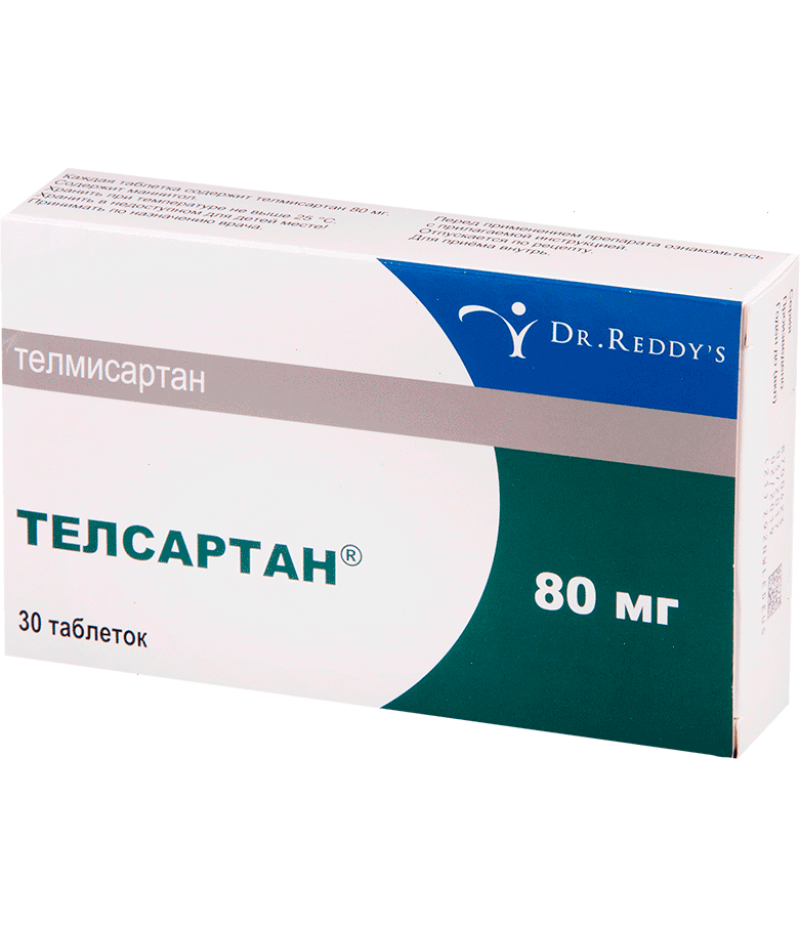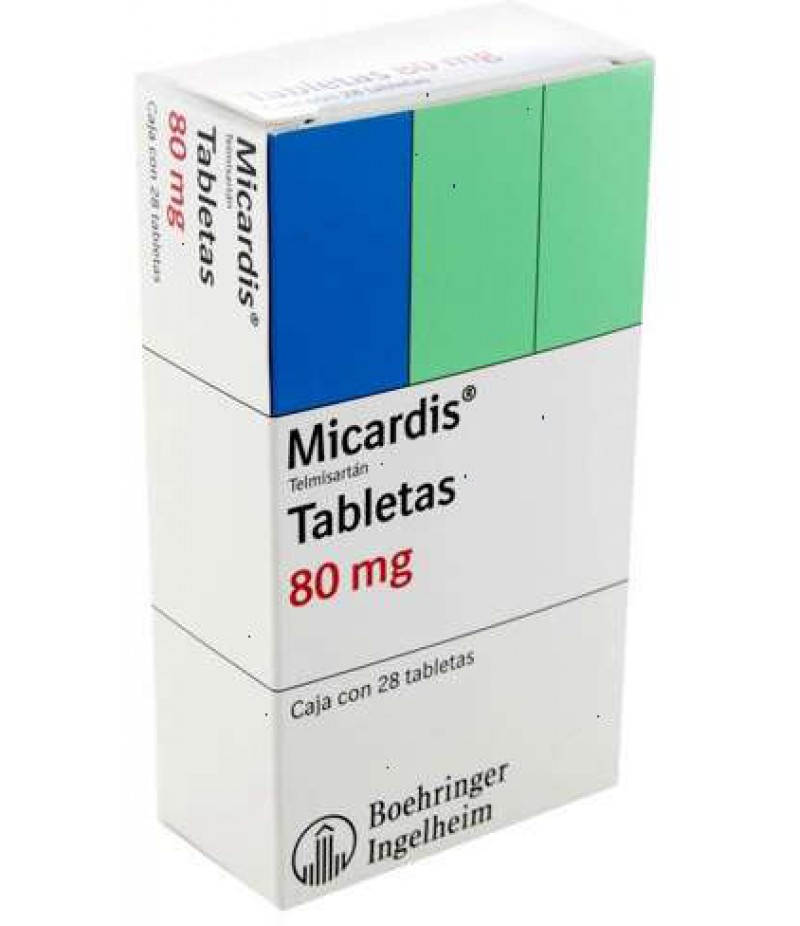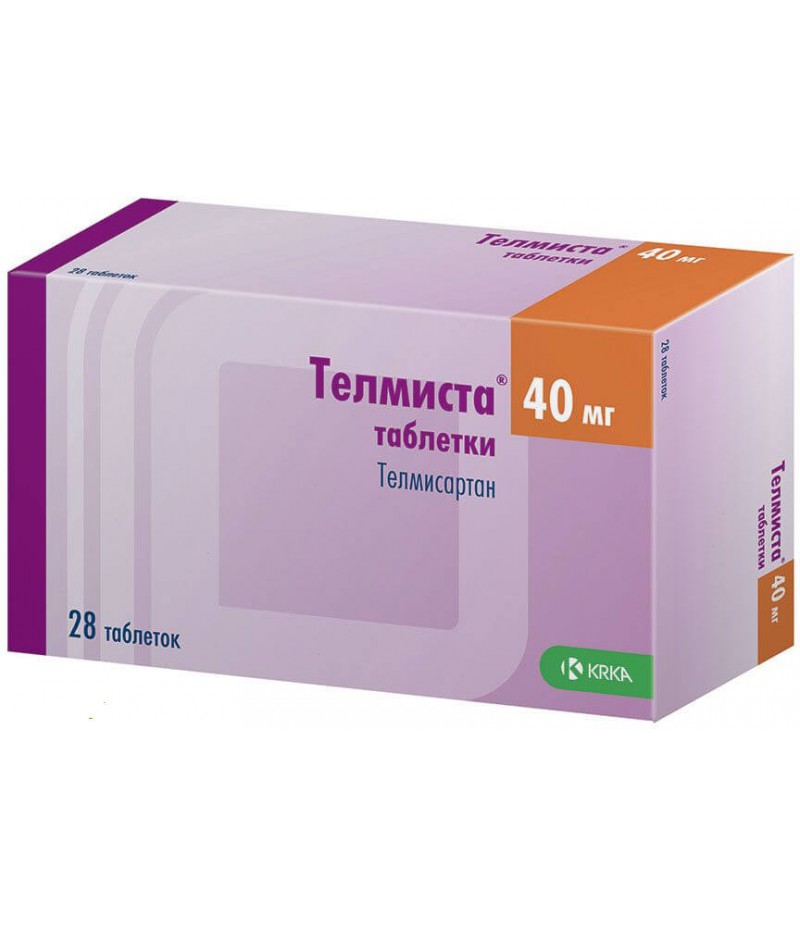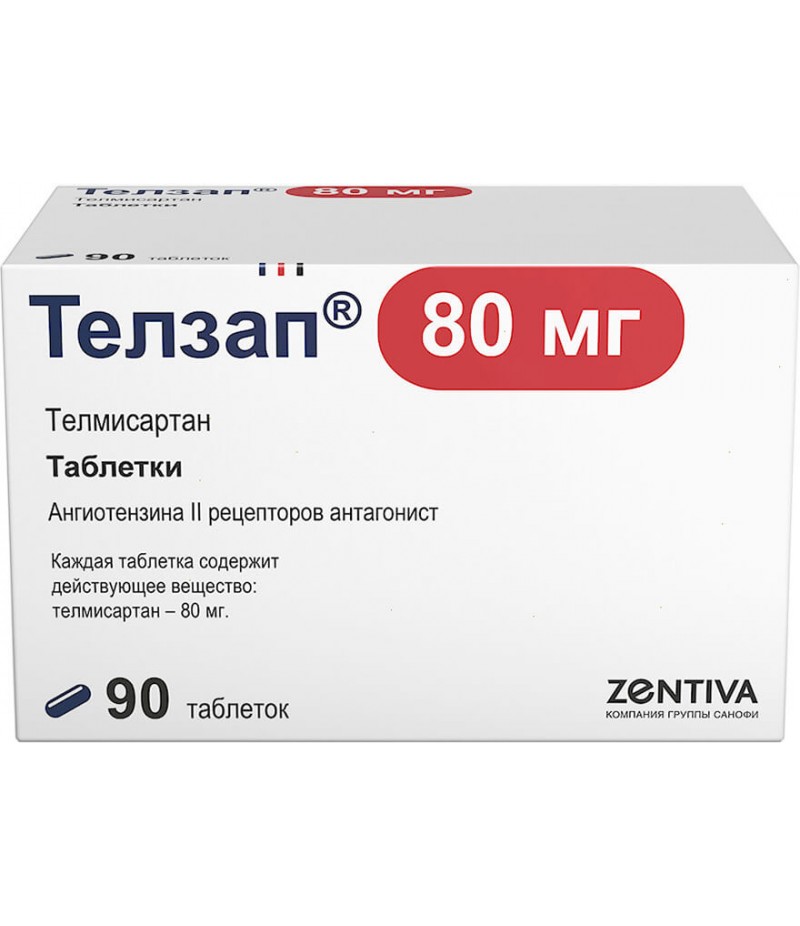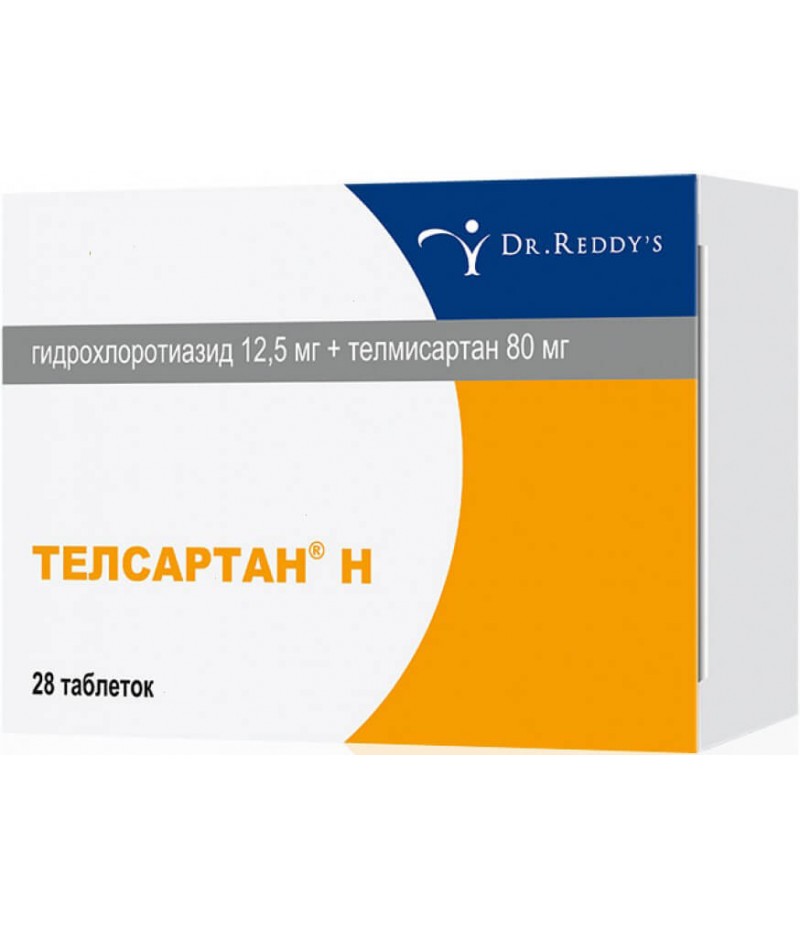Telsartan tabs 80mg #30
- $17.18
- 3 or more $16.99
- Availability:In Stock
Telsartan instructionYou can buy Telsartan hereComposition1 tablet 40 mg contains:Active ingredient: Telmisartan 40.00 mg.Excipients: meglumine 12.00 mg, sodium hydroxide 3.35 mg. Povidone-QZO 12.00 mg, polysorbate-80 1.50 mg, man..
Tags: tabs
Telsartan instruction
You can buy Telsartan here
Composition
1 tablet 40 mg contains:
Active ingredient: Telmisartan 40.00 mg.
Excipients: meglumine 12.00 mg, sodium hydroxide 3.35 mg. Povidone-QZO 12.00 mg, polysorbate-80 1.50 mg, mannitol 216.05 mg, magnesium stearate 5.10 mg.
1 tablet 80 mg contains:
Active ingredient: Telmisartan 80.00 mg.
Excipients: meglumine 24.00 mg. Sodium hydroxide 6.70 mg, Povidone-KZO 24.00 mg, Polysorbate-80 3.00 mg. mannitol 432.10 mg, magnesium stearate 10.20 mg.
Description
40 mg tablets
Capsule-shaped tablet, biconvex, white or almost white in color, on one side is a separating risk and “T” and “L” embossing on either side, “40” embossing on the other side.
80 mg tablets
Capsule-shaped tablet, biconvex, white or almost white in color, on one side is a separating risk and “T” and “L” are stamped on opposite sides of it, and “80” is on the other side.
Pharmacotherapeutic group:
Angiotensin II receptor antagonist.
ATX Code: C09CA07
Pharmacodynamics
Telmisartan is a specific angiotensin receptor antagonist (ARA) II, effective when taken orally. It has a high affinity for the ATi subtype of angiotensin II receptors, through which the action of angiotensin II is realized. Displaces angiotensin II from its association with the receptor, without showing the properties of an agonist with respect to this receptor. Telmisartan binds only to the ATi receptor subtype angiotensin II. Communication is long lasting. It has no affinity for other receptors, including the ATg receptor and other less studied angiotensin receptors. The functional significance of these receptors, as well as the effect of their possible over-stimulation with angiotensin II, the concentration of which increases with the administration of telmisartan, has not been studied. Telmisartan reduces the concentration of aldosterone in the blood plasma, does not inhibit renin in the blood plasma and does not block the ion channels. Telmisartan does not inhibit angiotensin-converting enzyme (kininase II), which also catalyzes the degradation of bradykinin. Therefore, the enhancement of bradykinin-induced side effects is not expected.
In patients with arterial hypertension, telmisartan at a dose of 80 mg completely blocks the hypertensive effect of angiotensin II. The onset of the antihypertensive effect is noted within 3 hours after the first intake of telmisartan inside. The effect of Telsartan lasts for 24 hours and remains significant up to 48 hours. A pronounced antihypertensive effect usually develops 4 weeks after regular use of the drug.
In patients suffering from arterial hypertension. Telmisartan reduces systolic and diastolic blood pressure (BP), without affecting the heart rate (HR).
In the case of abrupt cancellation of telmisartan, blood pressure gradually returns to the original level without the development of the "cancellation" syndrome.
In a study with telmisartan, cases of cardiovascular mortality, nonfatal myocardial infarction, nonfatal stroke, or hospitalization due to congestive heart failure were evaluated. A reduction in cardiovascular morbidity and mortality has been proven in high-risk cardiovascular patients (with coronary artery disease, stroke, peripheral artery disease, or diabetes mellitus with concomitant damage to target organs such as retinopathy, left ventricular hypertrophy, macro- or microalbuminuria in history) over the age of 55 years.
Pharmacokinetics
When ingestion is rapidly absorbed from the gastrointestinal tract. Bioavailability is 50%. When taken simultaneously with food, the reduction in area under the concentration-time pharmacokinetic curve (AUC) ranges from 6% (at a dose of 40 mg) to 19% (at a dose of 160 mg). 3 hours after ingestion, plasma concentration levels off regardless of the meal. There is a difference in plasma concentrations of telmisartan in men and women. The maximum plasma concentration (Stax) is about 3 times and AUC is about 2 times higher in women than men without significant effect on efficacy.
Communication with plasma proteins is 99.5% (mainly with albumin and alpha-1 glycoprotein). The volume of distribution is approximately 500 liters.
Metabolized by conjugation with glucuronic acid. Metabolites are pharmacologically inactive. The half-life (T1 / 2) is more than 20 hours.
Excreted through the intestine unchanged, the excretion by the kidneys - less than 2% of the dose. Total plasma clearance is high (about 900 ml / min) compared with the “hepatic” blood flow (about 1500 ml / min).
Elderly patients
The pharmacokinetics of telmisartan in elderly patients is not different from younger patients. Dose adjustment is not required.
Patients with renal failure
Changing the dose of telmisartan in patients with renal insufficiency is not required, including patients on hemodialysis. Telmisartan is not removed by hemodialysis.
Patients with liver failure
In patients with mild and moderate hepatic impairment (Child-Pugh class A and B), the daily dose of Telsartan should not exceed 40 mg.
Indications for use
• Arterial hypertension.
• Reduced cardiovascular morbidity and mortality in patients aged 55 years and older with a high risk of cardiovascular diseases, including a history of atherothrombosis such as coronary heart disease (CHD), a stroke or atherosclerosis of peripheral arteries, or a history of sugar Type II diabetes with documented target organ damage.
Contraindications for Telsartan
Hypersensitivity to the active substance or auxiliary components of Telsartan.
Pregnancy and breastfeeding period.
Obstructive diseases of the biliary tract.
Severe abnormal liver function (Child-Pugh class C).
Simultaneous use with aliskiren and drugs containing aliskiren in patients with diabetes and / or moderate or severe renal impairment (glomerular filtration rate (GFR) of less than 60 ml / min / 1.73 m2 of body surface area).
Concurrent use with angiotensin-converting enzyme inhibitors in patients with diabetic nephropathy.
Age up to 18 years (efficacy and safety have not been established).
Carefully
Bilateral stenosis of the renal arteries or stenosis of the artery of a single kidney (see section "Special instructions").
Mild and moderate violations of the liver and / or kidneys (see section "Special instructions").
Reduction in circulating blood volume (BCC) due to previous diuretic therapy, restriction of salt, diarrhea or vomiting.
Hyponatremia.
Hyperkalemia.
Conditions after kidney transplantation (no experience).
Chronic heart failure.
Stenosis of the aortic and mitral valve.
Idiopathic hypertrophic subaortic stenosis (hypertrophic obstructive cardiomyopathy).
Primary hyper aldosteronism.
Use during pregnancy and during breastfeeding
The use of Telsartan during pregnancy and during breastfeeding is contraindicated.
Pregnancy
There are no adequate data on the use of telmisartan in pregnant women.
Animal studies have shown the presence of reproductive toxicity.
Patients planning a pregnancy should be given an alternative therapy with an established safety profile regarding pregnancy.
When establishing the fact of pregnancy, Telsartan should be immediately discontinued and alternative treatment options should be considered.
The use of ARA II in the II and III trimesters of pregnancy in humans is manifested by fetotoxic effects (reduced kidney function, oligohydramnios, delayed ossification of the skull) and neonatal toxicity (renal failure, hypotension, hyperkalemia).
If ARA II was used in the second trimester of pregnancy or later, an ultrasound examination of the kidneys and bones of the fetal skull is recommended.
Newborns whose mothers received ARA II should be carefully monitored for hypotension.
Breastfeeding period
Breastfeeding is not recommended during telmisartan therapy. since there is no available data on the experience of using telmisartan during this period. It is recommended to apply an alternative therapy with an established safety profile regarding breastfeeding, especially in the neonatal period and during nursing of premature babies.
Fertility
There was no effect of telmisartan on the fertility of males and females of animals in preclinical studies.
Dosage and administration
Inside, regardless of the meal, drinking water.
Arterial hypertension
The initial recommended dose of the drug Telsartan - 1 tablet 40 mg once a day. Some patients may be effective dose of 20 mg per day (1/2 tablet 40 mg). In cases where the therapeutic effect is not achieved, the maximum recommended dose of the drug Telsartan can be increased to 80 mg (1 tablet 80 mg or 2 tablets 40 mg) once a day. When deciding whether to increase the dose should be taken into account that the maximum antihypertensive effect is usually achieved within 4-8 weeks after the start of treatment.
Reduced cardiovascular morbidity and mortality
The recommended dose of the drug Telsartan * - 1 tablet 80 mg once a day. In the initial period of treatment, additional correction of blood pressure may be required.
Renal dysfunction
There is limited experience with telmisartan in patients with severe renal dysfunction or on hemodialysis. Such patients require a low initial dose of 20 mg.
Patients with mild or moderate renal impairment do not require dose adjustment.
Liver function disorders
In patients with mild and moderately impaired liver function, the daily dose of Telsartan should not exceed 40 mg.
Application for severe violations of liver function is contraindicated (see section "Contraindications").
Elderly patients
Dosing regimen does not require changes.
Side effect
The overall incidence of side effects of telmisartan in patients with arterial hypertension in controlled studies is usually comparable to placebo (41.4% vs. 43.9%). The observed cases of side effects did not correlate with the gender, age or race of the patients. The safety profile of Telsartan in patients receiving telmisartan for the prevention of cardiovascular morbidity and mortality is consistent with data obtained from patients with arterial hypertension.
The frequency of adverse effects is as follows: very often (> 1/10 of appointments); often (1/10 - 1/100 appointments); infrequently (1/100 - 1/1000 of appointments); rarely (1/1000 - 1/10 000); very rarely (<1/10 000 appointments).
Infectious and parasitic diseases
Infrequently - upper respiratory tract infections (including pharyngitis and sinusitis), urinary tract infections (including cystitis); rarely, sepsis, including fatal cases (mechanism of origin unknown).
Violations of the blood and lymphatic system
Infrequently - anemia; rarely eosinophilia. thrombocytopenia.
Immune system disorders
Rarely - anaphylactic reactions, hypersensitivity.
Metabolic and nutritional disorders
Infrequently - hyperkalemia; rarely - hypoglycemia (in patients with diabetes).
Mental disorders
Infrequently - depression, insomnia; rarely - anxiety.
Nervous system disorders
Infrequently - fainting; rarely - drowsiness.
Violations by the organ of vision
Rarely - visual disorders.
Disturbances from an organ of hearing and labyrinth disturbances
Infrequently - vertigo.
Heart disorders
Infrequently - bradycardia; rarely - tachycardia.
Vascular disorders
Infrequently - orthostatic hypotension, a decrease in blood pressure (the effect was observed in patients with controlled blood pressure. Who used telmisartan to reduce cardiovascular morbidity and mortality on the background of standard therapy).
Disorders of the respiratory system, chest and mediastinum
Infrequently - shortness of breath, cough; very rarely, interstitial lung disease (post-marketing data, no causal link established).
Disorders of the gastrointestinal tract
Infrequently - abdominal pain, diarrhea, dyspepsia, flatulence, vomiting; rarely, stomach discomfort, dry mouth, dysgeusia.
Disorders of the liver and biliary tract
Rarely, liver dysfunction / liver disease (most cases were found in patients in Japan).
Violations of the rut and subcutaneous tissue
Infrequently - a hyperhidrosis, skin itch, skin rash; rarely - angioedema (fatal), eczema, erythema, urticaria, drug and toxic rash.
Disorders of the musculoskeletal and connective tissue
Infrequently - myalgia, back pain, muscle spasms; rarely - arthralgia, pain in the limbs, pain in the tendons (symptoms similar to tendonitis).
Kidney and urinary tract disorders
Infrequently - a renal failure, including an acute renal failure.
General disorders and disorders at the site of administration
Infrequently - pain in the chest, general weakness; rarely flu-like syndrome.
Laboratory and instrumental data
Infrequently - an increase in the level of creatinine in the blood; rarely - an increase in the concentration of uric acid, an increase in the activity of “liver” enzymes, an increase in the activity of creatine phosphokinase, a decrease in the level of hemoglobin in the blood serum,
Overdose with Telsartan
No overdose cases have been identified.
Symptoms: marked reduction in blood pressure, tachycardia, bradycardia.
Treatment: symptomatic therapy, hemodialysis is ineffective.
Interaction with other drugs
Taking Telmisartan, as well as other drugs acting on the renin-angiotensin-aldosterone system (RAAS). able to provoke hyperkalemia. The risk of hyperkalemia may increase with simultaneous administration with potassium-containing salt substitutes; potassium-sparing diuretics; ACE inhibitors; ARA II; nonsteroidal anti-inflammatory drugs (NSAIDs). including cyclooxygenase-selective (COX) type 2; heparin; immunosuppressive drugs (cyclosporine or tacrolimus) and trimethoprim.
The frequency of development of hyperkalemia depends on the presence of risk factors. With the simultaneous use of potassium-sparing diuretics and potassium-containing salt substitutes, the risk of hyperkalemia is especially high. Simultaneous use with ACE inhibitors or NSAIDs is accompanied by a lower risk of developing hyperkalemia, provided that careful precautions are taken.
Double blockade of the renin-angiotensin-aldosterone system
As shown by clinical studies, double blockade of RAAS using ACE inhibitors, ARA II or aliskiren compared with monotherapy is associated with an increased risk of arterial hypotension, hyperkalemia and renal impairment (including acute renal failure).
Digoxin
While taking telmisartan and digoxin, there is a median increase in peak and residual concentrations of digoxin in the blood plasma (49% and 20%, respectively). At the beginning, when adjusting and discontinuing telmisartan, it is necessary to control the concentration of digoxin in the blood serum in order to maintain it within the therapeutic range.
Potassium-sparing diuretics and potassium-containing salt substitutes
ARA II, such as telmisartan, reduce potassium loss caused by diuretics. Calibration-saving diuretics, such as spironolactone. eplerenone. triamterene or amiloride. preparations of potassium or potassium-containing salt substitutes may cause a significant increase in the serum potassium content. If their simultaneous use is necessary due to the presence of proven hypokalemia, treatment should be carried out with caution under frequent monitoring of serum potassium.
Lithium
With simultaneous prescription of lithium preparations with ACE and APA II inhibitors, including telmisartan, there was a reversible increase in the concentration of lithium in the blood plasma, accompanied by a toxic effect. If necessary, the simultaneous use of these drugs is recommended to control the content of lithium salts in the serum.
Nonsteroidal anti-inflammatory drugs
Acetylsalicylic acid in doses of 3 g per day or more, COX-2 inhibitors and non-selective NSAIDs can reduce the antihypertensive effect of APA II. In patients with impaired renal function (on the background of dehydration or elderly), the simultaneous administration of APA II and COX inhibitors can lead to a reversible deterioration of renal function. Therefore, drugs in the specified combination are prescribed with caution, especially in elderly patients. Before using telmisartan, it is recommended to evaluate the function of the kidneys, as well as correct the disturbances of water and electrolyte balance; further, it is advisable to monitor the function of the kidneys.
Ramipril
Simultaneous use with ramipril leads to an increase in AUCo -24 and Cmax of ramipril and ramiprilat 2.5 times. The clinical significance of this effect has not been established.
Loop and thiazide diuretics
Prior diuretic therapy in high doses, including furosemide (“loopback” diuretic) and hydrochlorothiazide (thiazide diuretic), can lead to a decrease in circulating blood volume and an increased risk of arterial hypotension at the start of telmisartan therapy.
Other antihypertensive drugs
The ability of telmisartan to reduce blood pressure can be enhanced with the simultaneous use of other antihypertensive drugs. Given the pharmacological properties, it is possible to enhance the effect of antihypertensive drugs, including telmisartan, while simultaneously prescribing with baclofen or amifostine.
Ethanol, barbiturates, anesthetics and antidepressants can contribute to the development of orthostatic hypotension.
Systemic Corticosteroids
Glucocorticosteroids reduce the antihypertensive effect of telmisartan.
special instructions
Liver dysfunction
Telmisartan should not be prescribed to patients with cholestasis, obstruction of the biliary tract or severely impaired liver function (Child-Pugh class C), as telmisartan is excreted mainly with bile. In these patients, excretion of Telsartan is expected to decrease. Telmisartan should be used with caution in patients with mild or moderate liver dysfunction (class A or B according to Child-Pugh classification).
Vasorenal arterial hypertension
When using drugs that affect the RAAS in patients with bilateral stenosis of the renal arteries or stenosis of the only functioning kidney, the risk of severe arterial hypotension and renal failure is increased.
Renal dysfunction
When using telmisartan in patients with renal insufficiency, it is recommended to control the serum potassium content and creatinine concentration. Experience of use after recently transferred transplantation of kidneys is not described.
Hypovolemia
Patients with hypovolemia and / or hyponatremia may develop symptomatic arterial hypotension, especially after taking the first dose of telmisartan, due to intensive diuretic therapy, restriction of salt intake, diarrhea, or vomiting. Before starting therapy, water-electrolyte imbalance should be corrected.
Double blockade of RAAS
The simultaneous administration of ACE inhibitors, ARA II or aliskiren increases the risk of hypotension, hyperkalemia and impaired renal function (including acute renal failure), therefore the use of a combination of these drugs is regarded as a double blockade of RAAS and is not recommended for administration to patients. When absolutely necessary, treatment with a double blockade of RAAS should be carried out under strict medical supervision and careful monitoring of kidney function, electrolytes and blood pressure.
ACE inhibitors and ARA II should not be used simultaneously in patients with diabetic nephropathy.
Other conditions with RAAS activation
In patients whose vascular tone and renal function is determined by RAAS activity (patients with chronic heart failure or kidney disease, including stenosis of two renal arteries or stenosis of an artery of a single kidney), the use of drugs that affect the RAAS can be accompanied by the development of arterial hypotension, hyperasotemia, oliguria and in rare cases - acute renal failure.
Primary and hyper aldosteronism
Patients with primary hyperaldosteronism are resistant to antihypertensive drugs that affect the RAAS, so these patients are not recommended to use telmisartan.
Aortic and / or mitral stenosis, hypertrophic obstructive cardiomyopathy (GOKMP)
Telmisartan should be used with caution in patients with hemodynamically significant stenosis of the aortic and / or mitral valves or with GOKMP.
Patients with diabetes who receive insulin or hypoglycemic agents for oral administration
With the use of telmisartan in these patients may develop hypoglycemia.
It is recommended to regularly monitor the concentration of blood glucose and, if necessary, adjust the dose of hypoglycemic agents.
Hyperkalemia
The use of drugs affecting the RAAS can cause hyperkalemia. Before the simultaneous use of such drugs should assess the ratio of benefit / risk.
Risk factors for the development of hyperkalemia:
- renal failure, age over 70 years, diabetes;
- simultaneous use of drugs that affect the RAAS (ACE inhibitors, ARA II) and / or potassium-sparing diuretics (spironolactone, eplerenone, triamterene, amiloride), potassium or potassium-containing salt substitutes, NSAIDs (including COX-2 selective), heparin, immunosuppressive drugs drugs (cyclosporine or tacrolimus). as well as trimethoprim;
- associated conditions, such as dehydration, acute heart failure in the decompensation stage, metabolic acidosis, renal dysfunction, sudden progression of kidney disease (infectious diseases), conditions accompanied by tissue necrosis (acute ischemia of the extremities, rhabdomyolysis, extensive trauma).
Patients at risk should be carefully monitored for serum potassium concentration.
Ethical features
ACE and APA II inhibitors (including telmisartan) may have a less pronounced antihypertensive effect in patients of the Negroid race.
Perhaps this is due to a decrease in the level of renin in hypertension in these patients compared with other races.
Other
As with the treatment of any antihypertensive drugs, an excessive decrease in blood pressure in patients with coronary artery disease or ischemic cardiomyopathy can lead to myocardial infarction or stroke.
Influence on ability to steer vehicles, mechanisms
Special clinical studies to assess the effect of Telsartan on the ability to drive and mechanisms were not conducted. However, when driving and pursuing hazardous activities, the possibility of developing dizziness and drowsiness should be taken into account, which requires caution.
Release form
Tablets 40 mg and 80 mg.
On 7 tablets in the blister from (PVC / A1 / PAS) foil / aluminum foil.
On 2 or 4 blisters together with the application instruction in a pack cardboard.
On 10 tablets in the blister from (PVC / A1 / PAS) foil / aluminum foil.
On 3 blisters together with the application instruction in a pack cardboard.
Storage conditions
At a temperature not higher than 25 ° С.
Keep out of the reach of children!
Shelf life - 2 years.
Do not use after the expiration date printed on the package.
Sales conditions
A prescription is not required to buy Telsartan.

